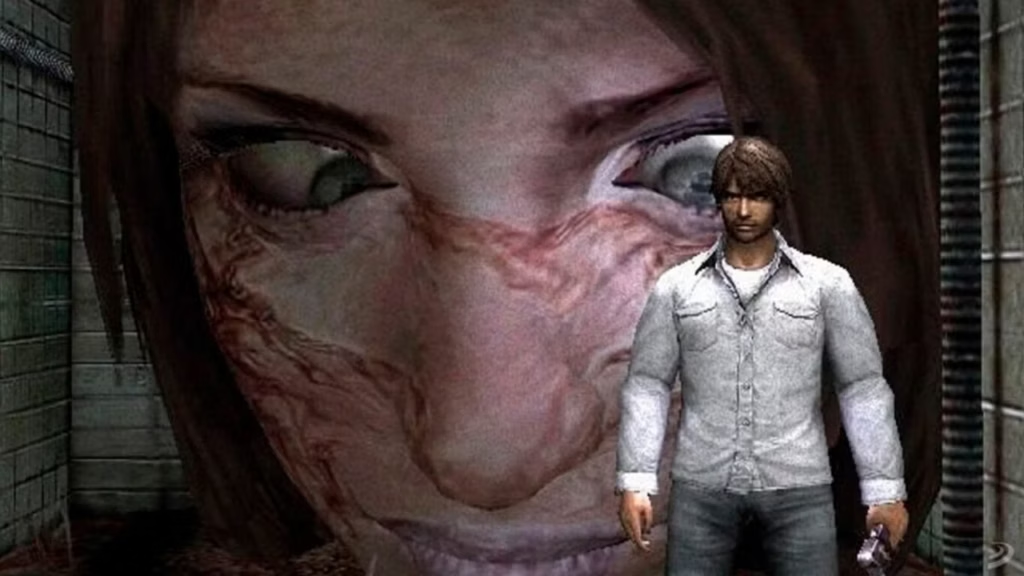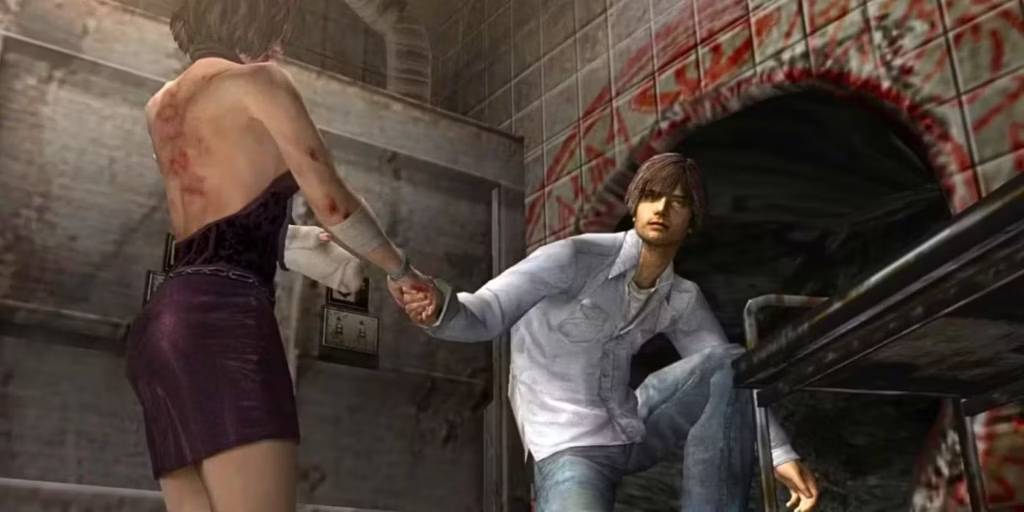
In Silent Hill 4: The Room, players assume the role of Henry Townshend, an ordinary man trapped in his apartment in South Ashfield. Suddenly, Henry finds himself unable to leave his apartment due to mysterious supernatural forces and discovers a series of portals connecting his home to otherworldly, nightmarish dimensions. As he explores these eerie locations, Henry must confront horrifying creatures, uncover the truth behind the malevolent forces haunting him, and attempt to survive a growing web of terror that threatens both his sanity and his life.
Released in 2004 for the PlayStation 2, Xbox, and PC, Silent Hill 4: The Room was developed by Team Silent/ Konami Computer Entertainment Tokyo and published by Konami. The game represents a departure from previous entries in the series, moving away from the traditional town of Silent Hill and instead centering gameplay around Henry’s apartment, which becomes both a safe haven and a prison. This installment blends psychological horror with physical threats, offering a unique take on the series’ signature themes of isolation, fear, and personal trauma.
This was the last work of Team Silent Before the series passed to Western Developers.















Gameplay
Gameplay combines survival horror staples exploration, combat, and puzzle-solving with new mechanics centered on Henry’s apartment. Players can freely return to the apartment to save progress, store items, and recover, but must navigate deadly portals that transport them to various nightmarish environments. Combat is primarily melee focused, though firearms are available with limited ammunition. Puzzles and environmental hazards are key to progression, and the game emphasizes tension through restricted movement, limited resources, and unpredictable enemy encounters.
Visuals & Style
Silent Hill 4: The Room features atmospheric graphics that blend realistic urban interiors with disturbing, surreal environments. The apartment is rendered in meticulous detail, emphasizing familiarity while slowly becoming oppressive. The otherworldly dimensions showcase twisted architecture, decayed corridors, and grotesque monsters that heighten psychological unease. The soundtrack, composed by Akira Yamaoka, reinforces tension with haunting melodies and ambient sounds, creating an immersive sense of dread throughout the game.
Importance in Survival Horror History
This installment is important for its experimental approach within the Silent Hill series. By confining players initially to a single apartment and using portals to connect disparate horror locations, it explored new ways to evoke fear and isolation. The game also delved deeper into psychological horror, emphasizing the personal and intimate nature of terror rather than relying solely on external threats. Its experimentation with environment and narrative influenced subsequent horror games exploring confined spaces and multi-dimensional storytelling.
Reception vs Historical Value
Upon release, the game received generally positive reviews for its atmosphere, narrative ambition, and innovative approach, though some fans criticized the departure from the traditional Silent Hill setting and mechanics. Over time, Silent Hill 4: The Room has been reassessed as a bold, divisive entry in the series, appreciated for its psychological depth, inventive gameplay, and haunting design. Its cult following continues to discuss and analyze its unique contributions to survival horror.
Availability & Collectibility



Silent Hill 4: The Room was released on PlayStation 2, Xbox, and PC, with physical copies moderately available on the secondhand market. digital Re-Release is available on GOG.
GOG: -30% Silent Hill 4: The Room on GOG.com
Trailer:
